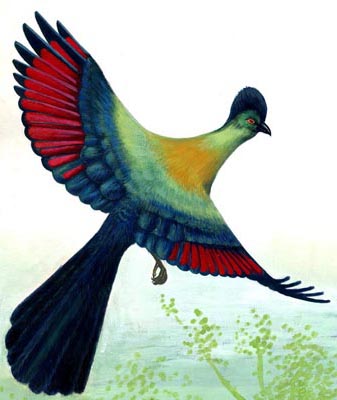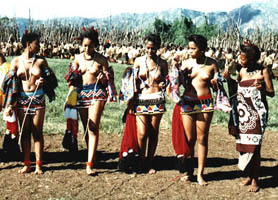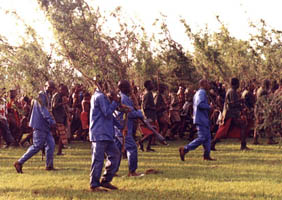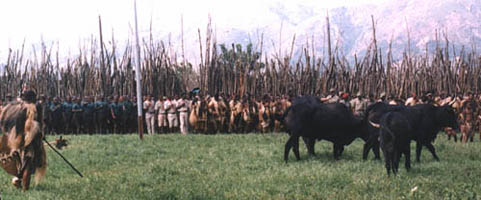The ENTC now has a new website, at www.entc.org.sz
Our logo is adapted from a painting by Phillip Dlamini, 1998, of a purple crested turaco. In traditional Swazi dress, the red feathers feature in the royal headdress, so this bird illustration is not only a symbol for wildlife conservation, but also of cultural heritage.



No announcement is made for the date of the public holiday for the main day of the Incwala. It is the fourth day after the full moon nearest the longest day, December 21. Incwala is often given in English as 'first fruits ceremony', but the King's tasting of the new harvest is only one aspect among many in this long pageant. Incwala is best translated as 'Kingship Ceremony' : when there is no king, there is no Incwala.
Every Swazi may take part in the public parts of the Incwala, especially the climax, the fourth day of the Big Incwala. The key figures are the King, Queen Mother, royal wives and children, the royal governors (indunas), the chiefs, the regiments, and the "bemanti" or 'water people'.

At full moon in November, the "bemanti" set off from the Queen Mothers home, in 2 groups:
1. the big group goes to kaTembe (Catembe, south of Maputo), to collect sea-water,
2. the small group goes north, collecting water from rivers.
The "bemanti" return to the royal capital with the new moon in December.
Then the Little Incwala takes place: two days of dance, song and ritual.
14 days later
The Big Incwala begins.

Day 1: Fetching the Lusekwane (sickle bush/Dichrostachys cinerea)
unmarried male youths set off from the Queen Mothers village and march 50 kilometres to cut branches of the "lusekwane" under the light of the full moon.
Day 2: Dropping the Lusekwane
the boys place their "lusekwane" branches in the national cattle byre/kraal. The elders weave these branches in between the poles of the "inhlambelo" - the king's private sanctuary.
Day 3:
morning: young boys cut branches of the "black imbondvo" (red bushwillow/Combretum apiculatum) and these are added to the "inhlambelo".
afternoon: while the king is receiving traditional medicines in his sanctuary.

Day 4: Eating the First Fruits and Throwing the Gourd
The main day: all the key players perform in a spectacular pageant inside the cattle byre; the king and regiments appear in full war-dress.
Day 5: Day of Abstinence
The "bemanti" roam the royal capital in daylight hours, enforcing the rules of this day: no sexual contact, touching water, wearing decorations, sitting on chairs/mats, shaking hands, scratching, singing, dancing or gayness.


Day 6: Day of the Log
The regiments march to a forest and return with firewood. The elders prepare a great fire in the centre of the cattle byre. On it, certain ritual objects are burnt, signifying the end of the old year, while the key players dance and sing inside the byre. The king remains in seclusion until the next full moon, when the "lusekwane" branches are removed and burnt.
Our Contacts:
Head Quarters: (+268) 2416 1489/1179
Email: info@sntc.org.sz
King Sobhuza II Park: (+268) 2416 1489/1179
Email: ksmp@sntc.org.sz
National Museum: (+268) 2416 1489/1179
Email: curator@sntc.org.sz
Copyright © ESWATINI NATIONAL TRUST COMMISSION
Malolotja Nature Reserve: (+268) 2444 3241 / (+268) 2416 1480
Email: culturalvillage@sntc.org.sz
Mantenga Nature Reserve and Swati Cultural Village: 2416 1151/1178
Email: culturalvillage@sntc.org.sz
Mlawula Nature Reserve: (+268) 2383 8885 (Reception)
(+268) 2383 8453 (Senior Warden)
Email: culturalvillage@sntc.org.sz
Magadzavane Lodge: (+268) 2343 5108/9
Email: magadzavane@sntc.org.sz